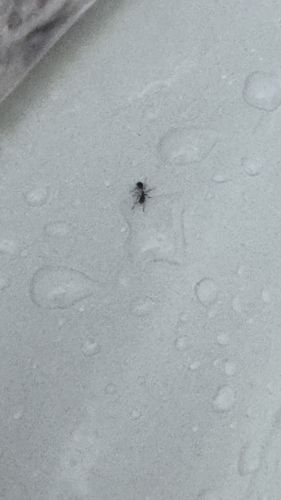Ant (general based on visual)
Scientific Name: Formicidae (family, specific genus/species not discernible)
Order & Family: Hymenoptera (Order), Formicidae (Family)
Size: Typically 2mm to 25mm (worker ants, depending on species)

Natural Habitat
Highly variable, almost worldwide distribution. Can be found in forests, grasslands, deserts, urban environments, and homes. They typically build nests underground, in wood, or under rocks/pavements.
Diet & Feeding
Omnivorous. Diet varies greatly by species but often includes nectar, seeds, fungi, other insects (live or dead), honeydew (from aphids), and human food scraps.
Behavior Patterns
Ants are social insects living in colonies that can range from a few dozen to millions. They exhibit complex social structures with defined roles (queen, workers, males). They communicate through chemical signals (pheromones) to recruit nestmates to food sources, alert to danger, and mark trails. Many species forage extensively for food.
Risks & Benefits
Risks: Can be pests in homes, contaminating food. Some species bite or sting, causing minor irritation (e.g., fire ants). Can cause structural damage to wooden structures (e.g., carpenter ants). Benefits: Play crucial roles in ecosystems as decomposers, aerators of soil, seed dispersers, and predators of other insects, thus contributing to pest control. Source of food for some animals.
Identified on: 11/7/2025